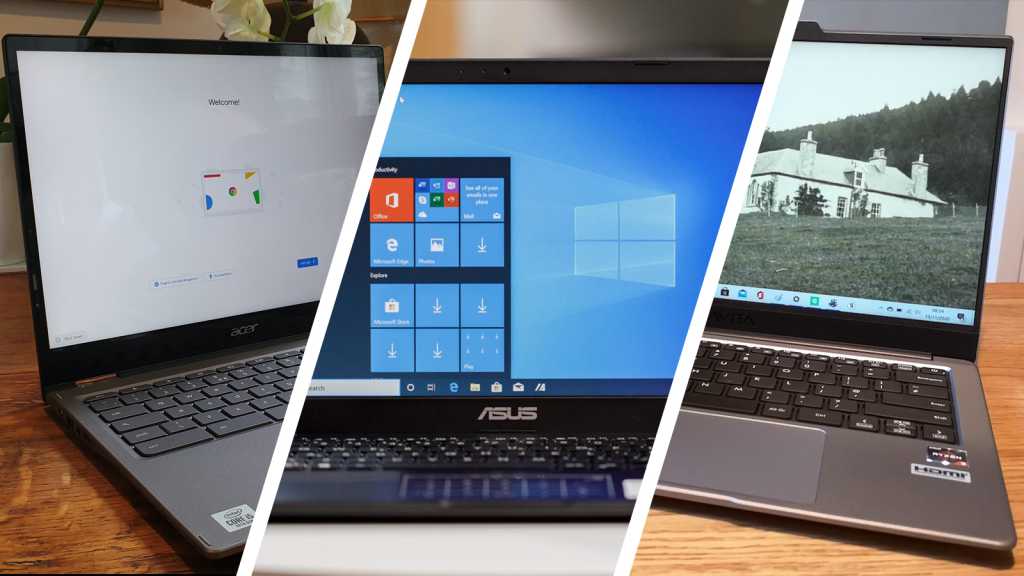In our never-ending quest to find the best laptops, we’ve scoured the market looking for the top options in all categories—from premium laptops to budget laptops to gaming laptops and everything in between. In the list below, you’ll find our top picks for November 2023.
Why you should trust us: Hey, it’s in our name! PCWorld prides itself on laptop experience and expertise. We’ve been covering PCs since 1983, and we now review more than 70 laptops every year. All of the picks below have been personally tested and vetted by our experts, who’ve applied not only performance benchmarks but rigorous usability standards. We’re also committed to reviewing PC laptops at every price point to help you find a machine that matches your budget.
Looking for great laptop deals? Check out our regularly updated roundup of the best laptop deals available right now.
Acer Aspire 3 – Best budget laptop

Pros
- Spacious keyboard with number pad
- HD webcam
- Solid video playback performance
- Decent business app performance
- Workday-long battery life
Cons
- Poor gaming graphics performance
- Basic 1080p display
- Small 128GB storage drive
With its affordable price point, decent performance, and robust build, the Acer Aspire 3 is a good budget option for most people. It might not be the most aesthetic laptop, but the build is surprisingly rugged. It has a solid, durable feel reminiscent of laptops with much higher price points. The full-size keyboard is nice, too. It has a spacious layout, which is perfect for longer typing sessions. With a budget laptop you will need to accept sacrifices in terms of performance, but the Aspire 3 is plenty fast enough for general use tasks like writing emails and browsing the web. If you’re shopping around for a solid everyday laptop that won’t break the bank, the Aspire 3 offers plenty of bang for relatively few bucks.
Dell Inspiron Plus 16 7630 – Best midrange laptop
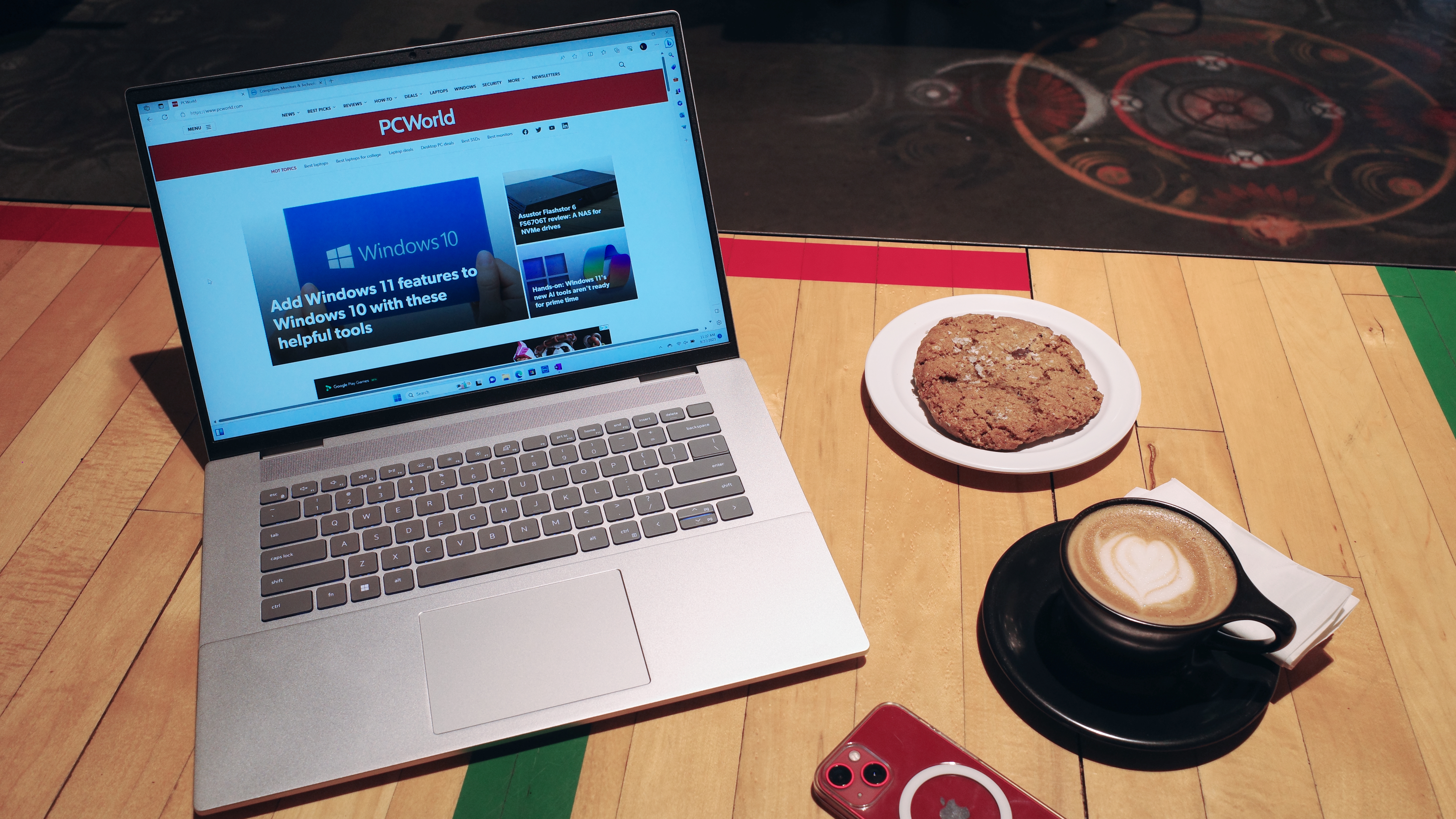
Pros
- Great matte display
- Solid-feeling design
- Repairable and upgradeable with ease
- Powerful Intel chips across the line
- Nice keyboard
- Electrical disconnects for mics and camera
Cons
- Weak battery life
- Expansion Modules drive price up for some ports
- Loud fan kicks on under moderate load
The Dell Inspiron Plus 16 7630 is a good midrange option, as it packs quite a bit of power for the price. For $1,299.99, you’re getting an Intel Core i7-13700H CPU, an Nvidia GeForce RTX 4060 GPU, 16GB of RAM, and 1TB of NVMe PCIe SSD storage. That’s more than enough power for everyday use as well as some gaming. The 1600p display is rather spacious at 16 inches with an aspect ratio of 16:10. The taller screen is nice, especially for office work. Battery life is fantastic, too. The Inspiron 16 Plus lasted over 11 hours on a single charge, which is nothing short of impressive. Additional features also include a 1080p webcam with a physical privacy shutter as well as a fingerprint reader.
Acer Chromebook Spin 514 – Best Chromebook
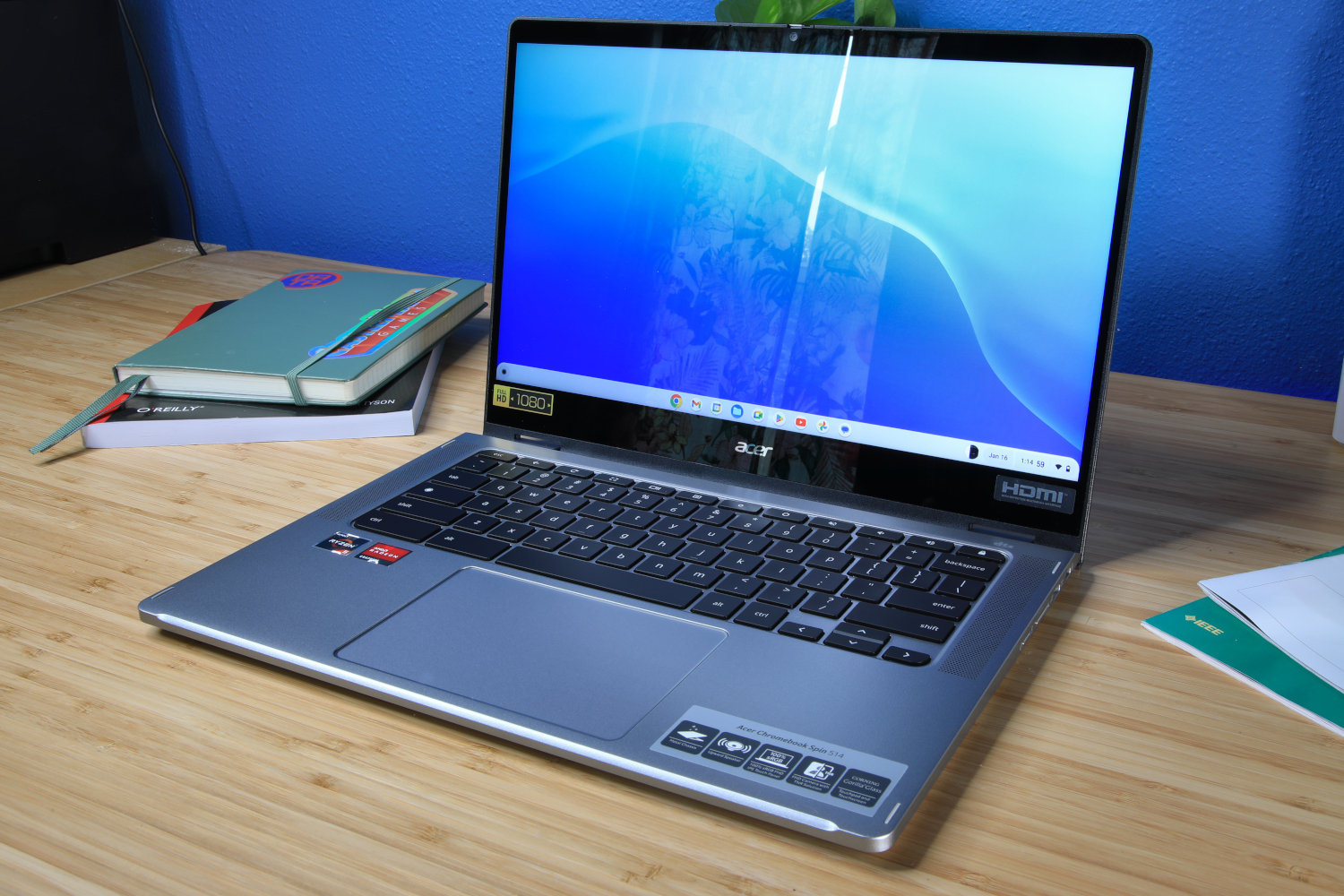
Pros
- Great processor performance
- Sturdy, premium design
- Top-notch keyboard and touchpad
- Two USB-C ports with Power Delivery
- Long battery life
Cons
- A bit heavy for a 2-in-1 device
- Display could be brighter
- Android game performance is unreliable
- Expensive compared to Windows alternatives
For people who enjoy the simplicity and convenience of the cloud-based ChromeOS over Windows, the Acer Chromebook Spin 514 is a worthy option. It certainly bucks the stereotype of Chromebooks being lesser laptops, with a sophisticated and sturdy design, peppy CPU performance, and a spectacular keyboard and touchpad. In addition to that it features dual USB-C ports with Power Delivery and DisplayPort Alternate Mode—meaning you can use either port for powering and charging the device or running video out to a secondary USB-C monitor.
The Spin 514 comes equipped with an AMD Ryzen 5 5625C CPU, AMD Radeon graphics, 8GB of RAM, and 128GB of SSD storage. The display, which folds back 360 degrees thanks to the 2-in-1 form factor, features a resolution of 1920×1080 and is touch-enabled. Of course, this degree of capability and versatility commands a higher price than other more bare-bones Chromebook variants. But if you can swing the $699.99 price tag, this machine won’t disappoint.
Dell XPS 13 Plus – Best ultraportable

Pros
- Fast CPU
- Gorgeous 3.5K OLED
- Great audio
Cons
- Only two USB-C Ports
- Middling battery performance
- No headset jack
The Dell XPS is not only an excellent ultraportable, but it comes with leading-edge performance and a stunning OLED panel. The 14-core Intel Core i7-1280P CPU means it’s no slouch in processing performance either. It’s not only great for general-use, but it can easily handle photo editing tasks as well. This device also comes equipped with Intel Xe graphics, 16GB of RAM, and 512GB of SSD storage.
Despite being only 13.4 inches, the OLED touchscreen is absolutely gorgeous. With a resolution of 3456×2160, the picture is sharp and vibrant. Unfortunately, since the design is so compact, it lacks some connectivity and the battery life is only mediocre. If you can forgive those limitations, then the Dell XPS 13 Plus is a good option for most people who need a laptop to travel with.
Note 10/17/2023: We recently reviewed the 2023 version of this laptop, although it didn’t score as high as the 2022 model. While we liked the high resolution display and the near-silent operation, battery life is average at best and there’s only two ports, which limits connectivity options.
Acer Swift Edge 16 – Best budget ultraportable
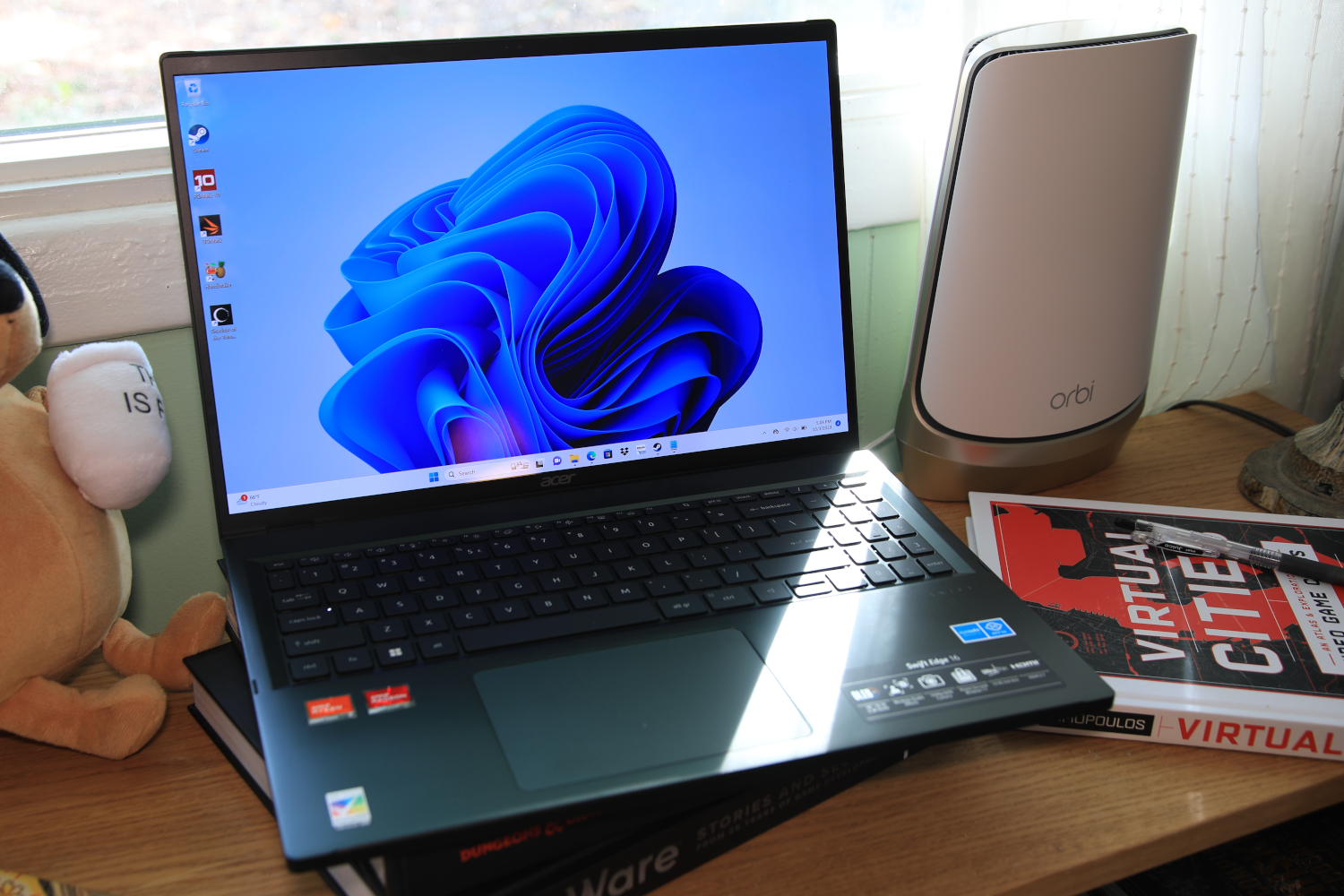
Pros
- Extremely thin and light
- Gorgeous OLED display
- Strong CPU performance in short-duration tasks
- Integrated Radeon graphics performs well
Cons
- Design doesn’t impress
- Mediocre keyboard and touchpad
- Very weak speakers
The Acer Swift Edge 16 has a lot to offer for a sub-$1,000 machine. Not only is it thin and light, but the OLED screen is gorgeous and super vibrant. It weighs just 2.71 pounds, which is considered featherlight as far as laptops go. You’re even getting a 16-inch 2000p OLED display with a 120Hz refresh rate. According to our reviewer, the display “delivers an infinite contrast ratio and deep, inky black levels that produce convincing shadows in dark scenes.” While the screen is a delight to watch movies on, the 54 watt-hour battery is small and lacking, managing only six to seven hours of battery life on a single charge. That’s not a horrible result, but we’ve seen better.
This machine comes with an AMD Ryzen 7 7840U CPU, Intel Iris Xe graphics, 16GB of DDR5 RAM, and 1TB of SSD storage. It’s basically designed with day-to-day productivity in mind. The design itself is on the blander side, as it’s just a black square, but some folks may dig the simplicity of it. If you’re looking for a thin-and-light laptop with a stunning 16-inch OLED display, then the Acer Swift Edge 16 is your best bet. The price (just over $1,000) isn’t too bad, either.
Razer Blade 14 (2023) – Best gaming laptop
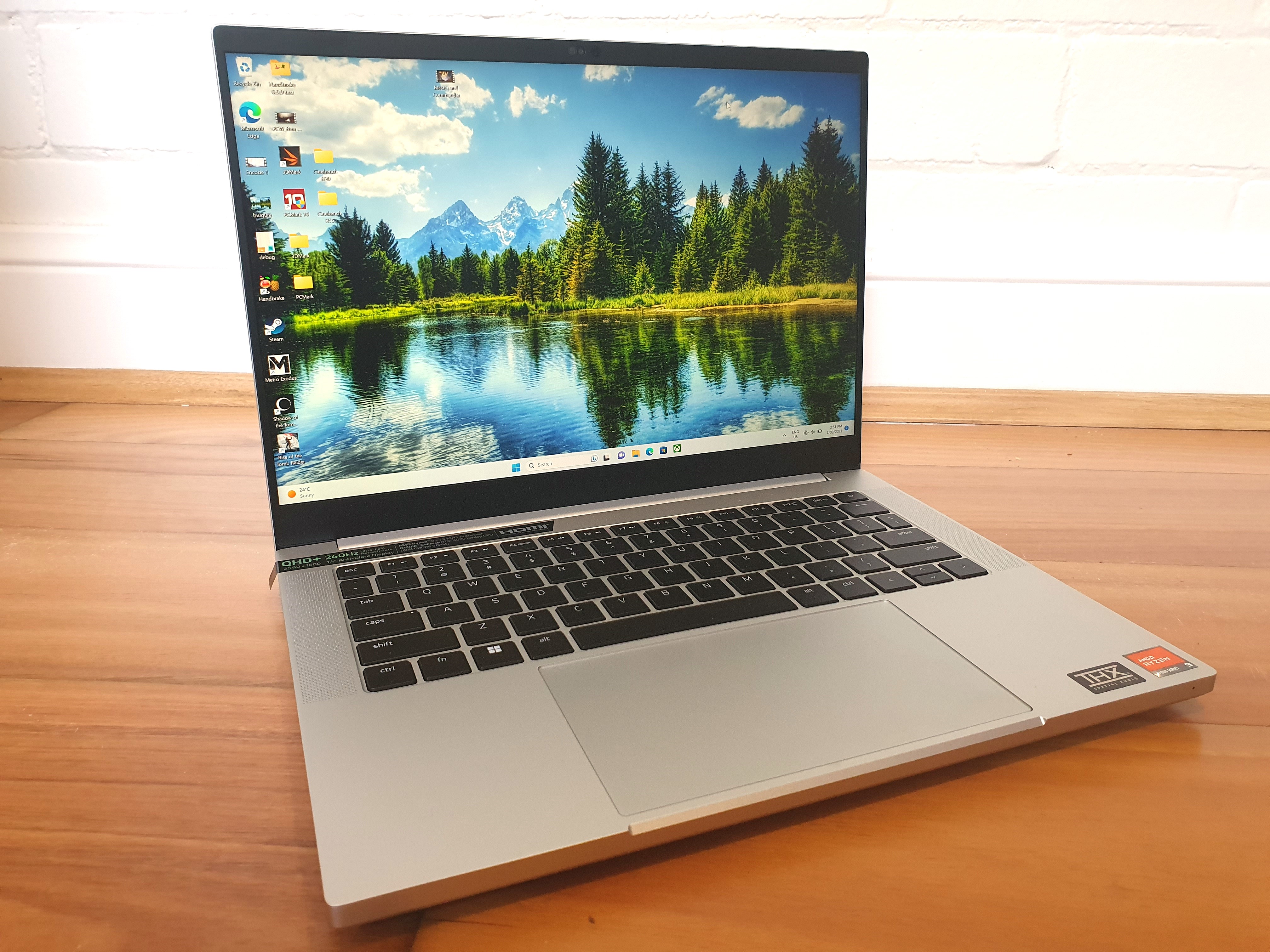
Pros
- The CPU and GPU power is impressive
- The QHD+ display looks superb and is very smooth
- The build quality is exceptional
Cons
- The keys are quick but can sometimes feel a bit mushy
- The audio sounds a bit flat at times
- The top-tier configuration is quite pricey
The Razer Blade 14 is a real standout as far as gaming laptops go, as it’s both portable and powerful. This machine weighs a little over 4 pounds, which is super lightweight for a gaming laptop. For context, most gaming laptops tip the scales at 6 pounds or more. It’s impressive under the hood, too. You’re getting an AMD Ryzen 9 7940HS CPU, an Nvidia GeForce RTX 4070 GPU, 32GB of RAM, and 1TB of PCIe SSD storage. In other words, it’s powerful enough to run most games (even those fast-paced, competitive ones) on the High or Ultra graphics preset. The 14-inch display has a resolution of 2560×1600, a refresh rate of 240Hz, a response time of 3ms, and an aspect ratio of 16:10. Our reviewer really liked the tall aspect ratio in particular, as it allowed him to have a “large viewing area” to enjoy his games and videos. It also has AMD’s FreeSync technology built in, which keeps games running nice and smooth.
If you have the budget for it, the Razer Blade 14 truly offers the ultimate gaming experience.
MSI Thin GF63 (2023) – Best budget gaming laptop
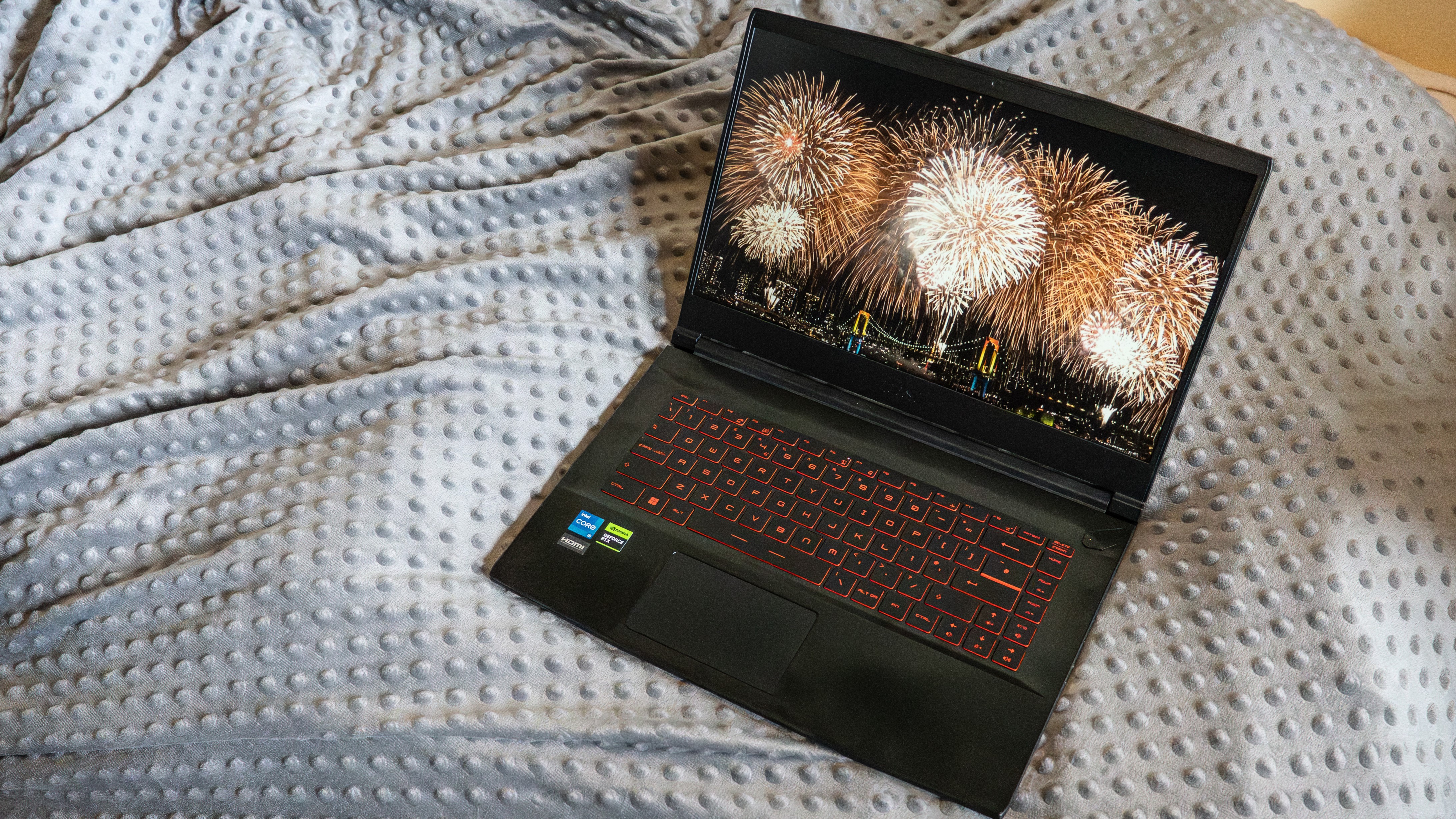
Pros
- Reasonably priced
- Decent 1080p gaming
- Well made
- Attractive red keyboard backlighting
Cons
- Disappointing screen
- Not the most powerful
- Poor battery life
If you’re looking for a reasonably priced laptop that’s both portable and powerful, the MSI Thin GF63 is the winning ticket. It weighs just over four pounds, which is lightweight for a gaming laptop. For context, most gaming machines tip the scales at six pounds or more (and sometimes much more). In addition to the lightweight form factor, it also packs a good amount of power for 1080p gaming.
The MSI Thin GF63 has an Intel Core i7-12650H CPU, an Nvidia GeForce RTX 4050 GPU, 8GB of RAM, and 512GB of SSD storage. This machine is capable of running games on the Medium or High graphics preset. For more graphically demanding games in which every second of response time matters, we’d recommend dialing back the graphics a bit. The 15.6-inch display has a resolution of 1920×1080 and a refresh rate of 144Hz. Although it manages just 300 nits of brightness (which is common for a budget gaming laptop), gameplay should be smooth thanks to the high refresh rate. It’s not the most vibrant or color-accurate screen we’ve ever seen, but it’s passable, especially for a sub-$1,000 gaming laptop.
If you can live with those compromises, then the MSI Thin GF63 is a great budget option for most gamers.
Asus Zenbook 14 Flip OLED – Best 2-in-1
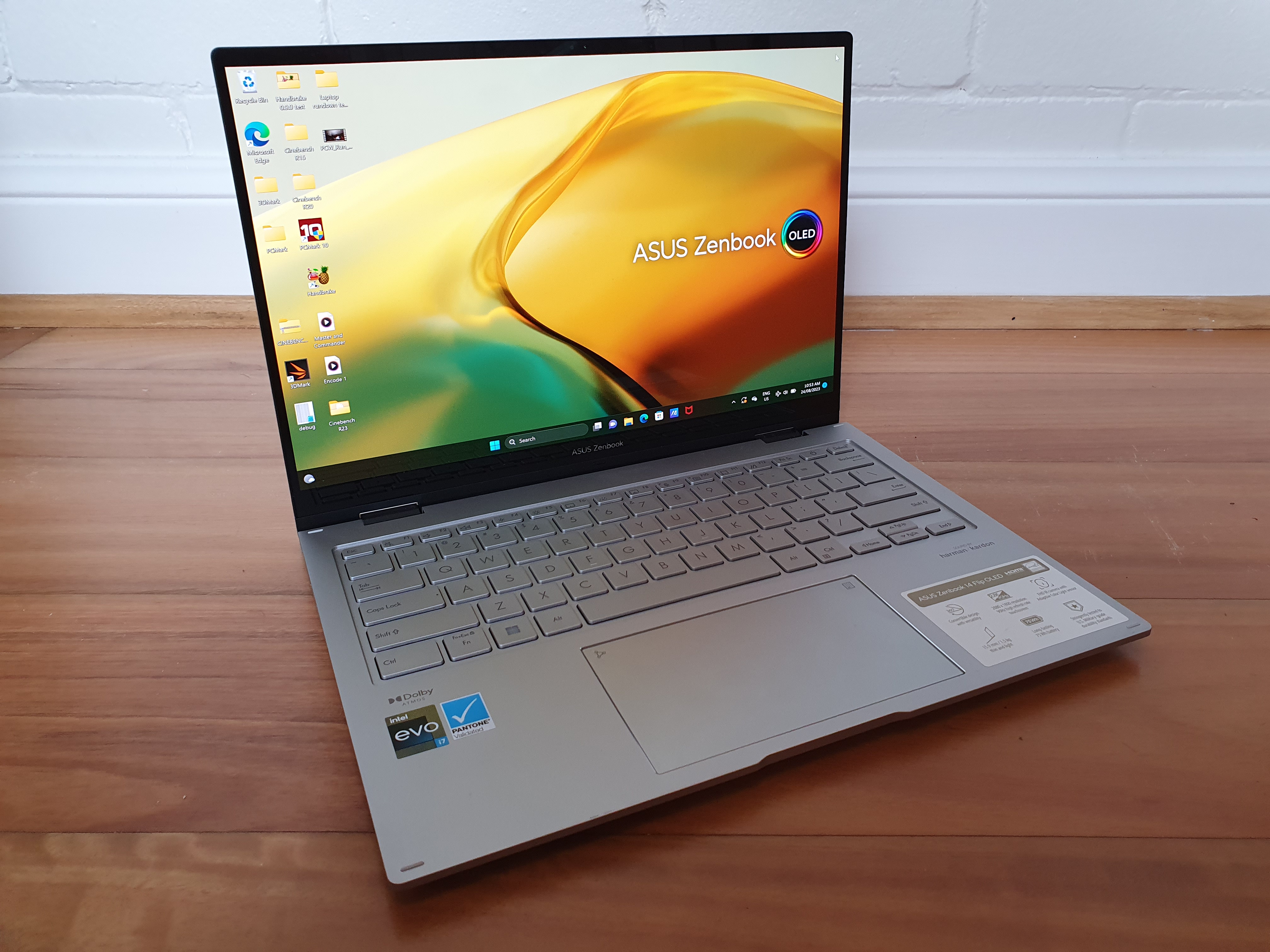
Pros
- The CPU performance is suitable for a range of productivity tasks
- It has a long battery life
- Connectivity includes two Thunderbolt 4 ports
Cons
- The display could be a little brighter still
- The function keys are quite small
- Intel Iris Xe graphics only
From the stunning OLED display and affordable starting price to the long battery life and fast-performing CPU, the Asus Zenbook 14 Flip OLED is a fantastic 2-in-1 laptop. It weighs 3.31 pounds and measures 0.63 inches at the chassis, so it’s a pretty lightweight machine. The review unit we looked at came with a 1800p OLED display, which covers 100 percent of the DCI-P3 color gamut (according to Asus). Our reviewer found a “high level of detail” in images and colors were “remarkably bright and saturated.” As for CPU performance, it blasted right through Maxon’s R20 multithreaded benchmark, earning a score of 3,437, which means it’s more than capable of handling demanding programs.
The Zenbook 14 Flip comes equipped with an Intel Core i7-1360P CPU, Intel Iris Xe graphics, 16GB of RAM, and 1TB of PCIe SSD storage. In addition to running more resource-heavy programs, the Flip will whiz through day-to-day tasks as well. It also last to the 12-hour mark during our battery test, which runs a 4K movie on repeat. Still not convinced? Well, the $999 starting price is pretty darn good if I say so myself, especially for such a premium machine. The Flip really has it all, which is why we’d highly recommend it.
HP Dragonfly Pro – Best MacBook alternative
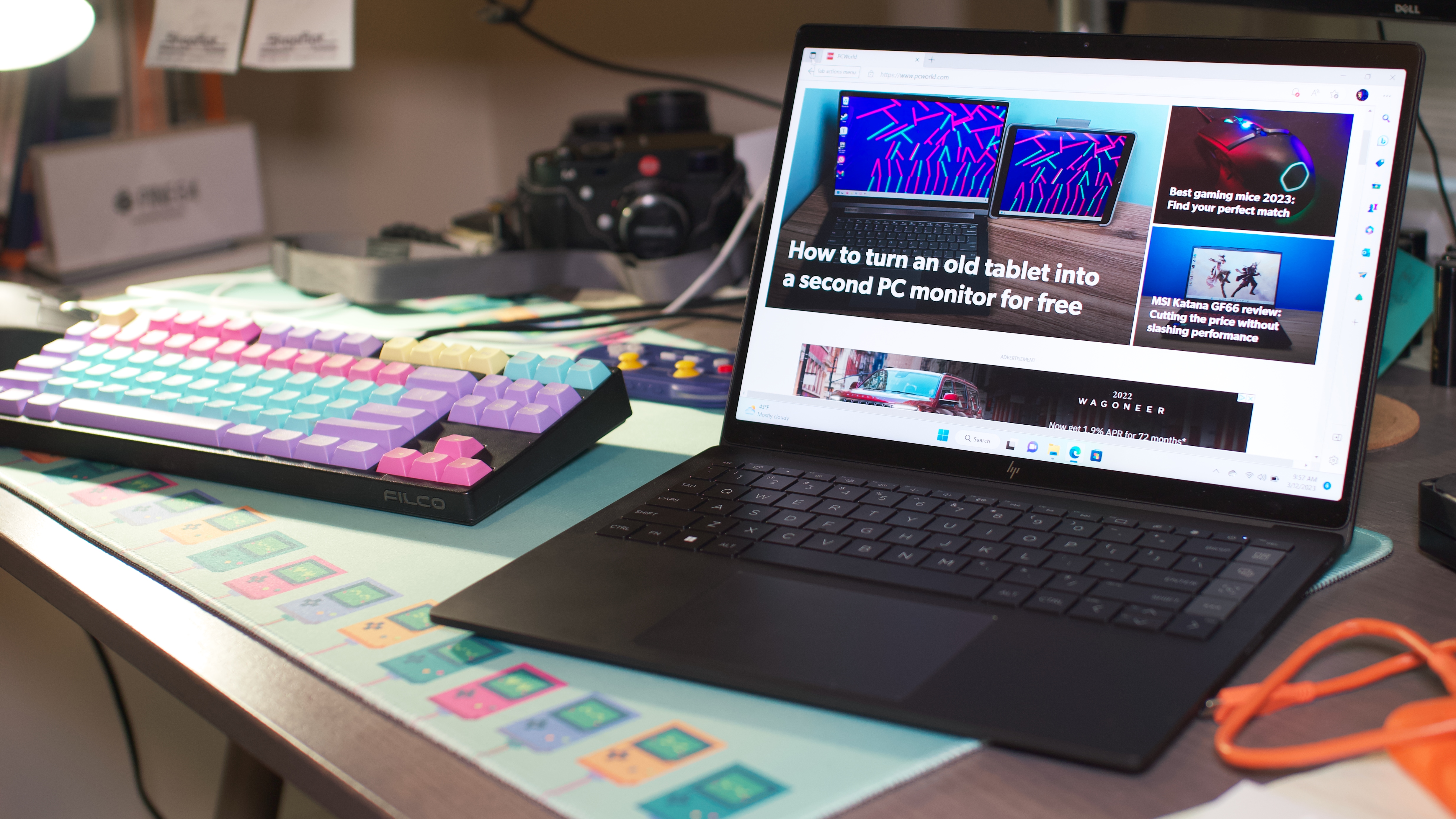
Pros
- Premium materials
- Powerful AMD Ryzen chip
- Surprising four speaker setup
- Good battery life
- High degree of value for the dollar
Cons
- All myHP keyboard keys should be remappable
- No user upgradeable components
- No headphone jack
- Only 2 high-speed USB-C ports
Want the attractive design, high efficiency, and strong performance of a MacBook Pro but in a Windows device? Then you should definitely consider the HP Dragonfly Pro. It comes about as close as possible to Apple’s line of premium laptops. HP partnered with AMD to trick out this laptop with a next-gen Ryzen 7 processor with eight high-performance cores and a Radeon 680M graphic card, making it much more powerful than its slim 0.7-inch thick figure would make you believe.
It impresses with an attractive design and high-quality feel made from aluminum and polycarbonate. You’ll even find that HP took a cue from the MacBook’s minimalist approach to ports as there are only two USB 4 Type-C ports and one USB-C 3.2 port. This makes for a clean look, but it may not appeal to users since it makes plugging in a lot of accessories a bit tricky. And while the display is good enough, it unfortunately can’t live up to Apple’s best. Still, for a laptop that is significantly cheaper than the current line of MacBook Pro models, this Dragonfly Pro laptop from HP is a more than worthy competitor—plus you have the flexibility of Windows and the ability to play games during your downtime.
Asus ROG Zephyrus M16 – Best 16-inch gaming laptop
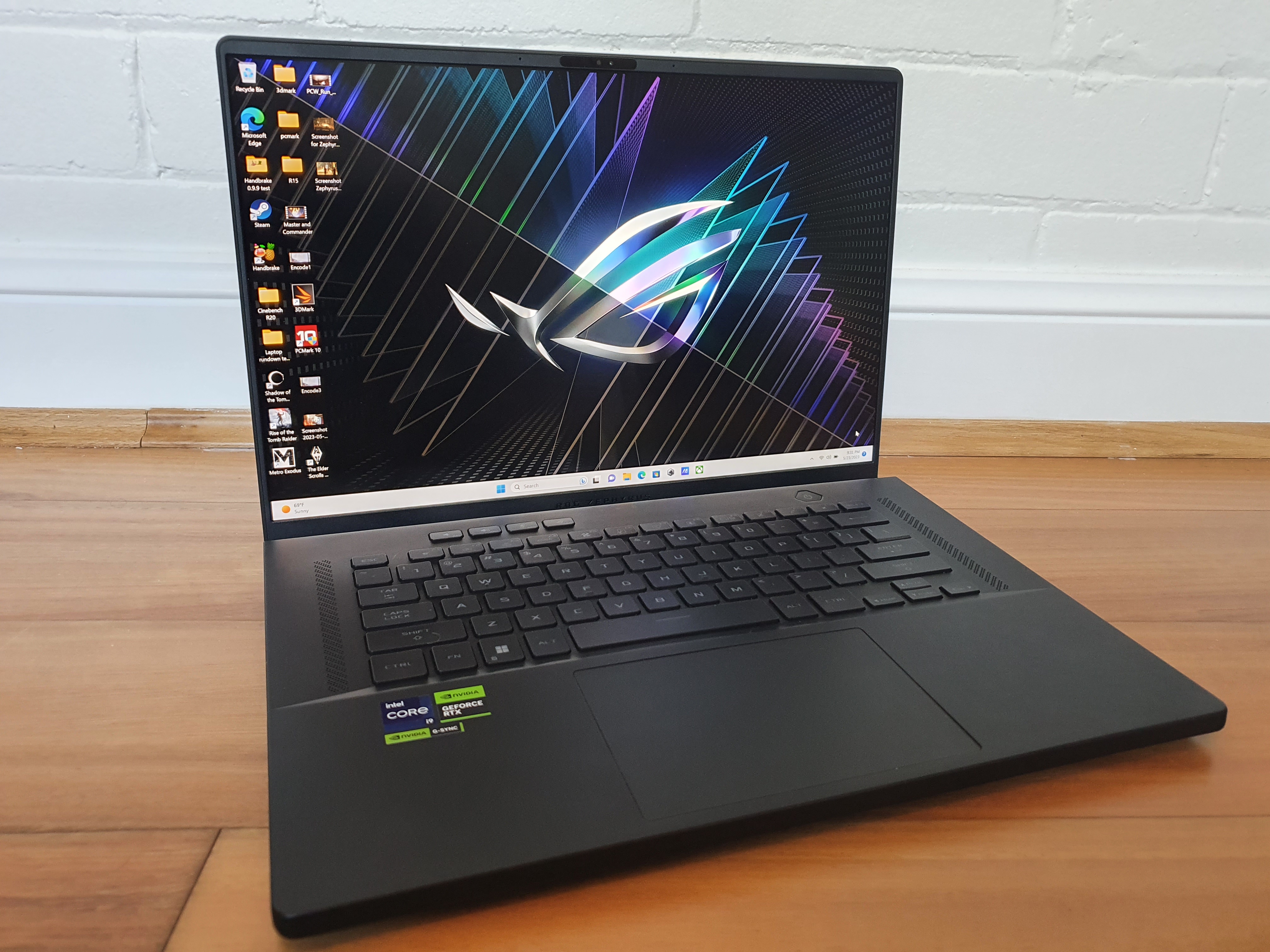
Pros
- Upgrades to the CPU and GPU provide very respectable performance
- The display is both graphically impressive and exceptionally smooth
- Price-wise it beats some competitors
Cons
- The keys feel a bit mushy
- It lacks a dedicated LAN port relying instead on upgrades to wireless connectivity
- The styling is quite modest
The Asus ROG Zephyrus M16 is relatively lightweight and powerful, a rare combination in the gaming laptop world. It weighs just 4.63 pounds, which is impressive as most gaming laptops tip the scales at six pounds or more. It’s also rocking powerful hardware such as an Intel Core i9-13900H CPU and an Nvidia RTX 4070 GPU. In fact, during our graphics testing, the M16 hit a high score of 11,862 in 3DMark, which wasn’t far off from the RTX 4090-loaded Razer Blade 16. That’s pretty darn impressive. This laptop also has a stunning 16-inch 1600p display with a 240Hz refresh rate and 3ms response time. That means you can expect lusciously smooth gameplay visuals.
Acer Predator Triton 17X – Best 17-inch gaming laptop

Pros
- The hardware is extremely powerful – expect high FPS scores
- The QHD+ display is large, produces brilliant color and is remarkably smooth
- The port selection is very decent
Cons
- The styling could be more original and gamer-centric
- It’s quite heavy
- The battery life is short
The Acer Predator 17X has a lot to offer the hardcore gamer. It features a fast high refresh rate display, a solid build, and powerful hardware. This machine comes packing an Intel i9-13900HX CPU, an Nvidia GeForce RTX 4090 GPU, 32GB of DDR5 RAM, and 1TB of PCIe NVMe SSD storage. In our graphics testing, it outperformed a number of big hitters like the Razer Blade 18 and the Alienware X16. The display is also spacious at 17-inches with a resolution of 2560×1600, a refresh rate of 240Hz, and a response time of 3ms. For port options, you’re getting two USB-A, two USB-C (Thunderbolt), one HDMI 2.1, one SD card reader, one 3.5mm combo audio jack, one 2.3 Gigabit Ethernet, and one Kensington lock.
So, if you’re on the hunt for a powerful 17-inch gaming laptop with tons of connectivity, the Acer Predator Triton 17X is a fantastic choice.
Asus ROG Strix 18 – Best 18-inch gaming laptop
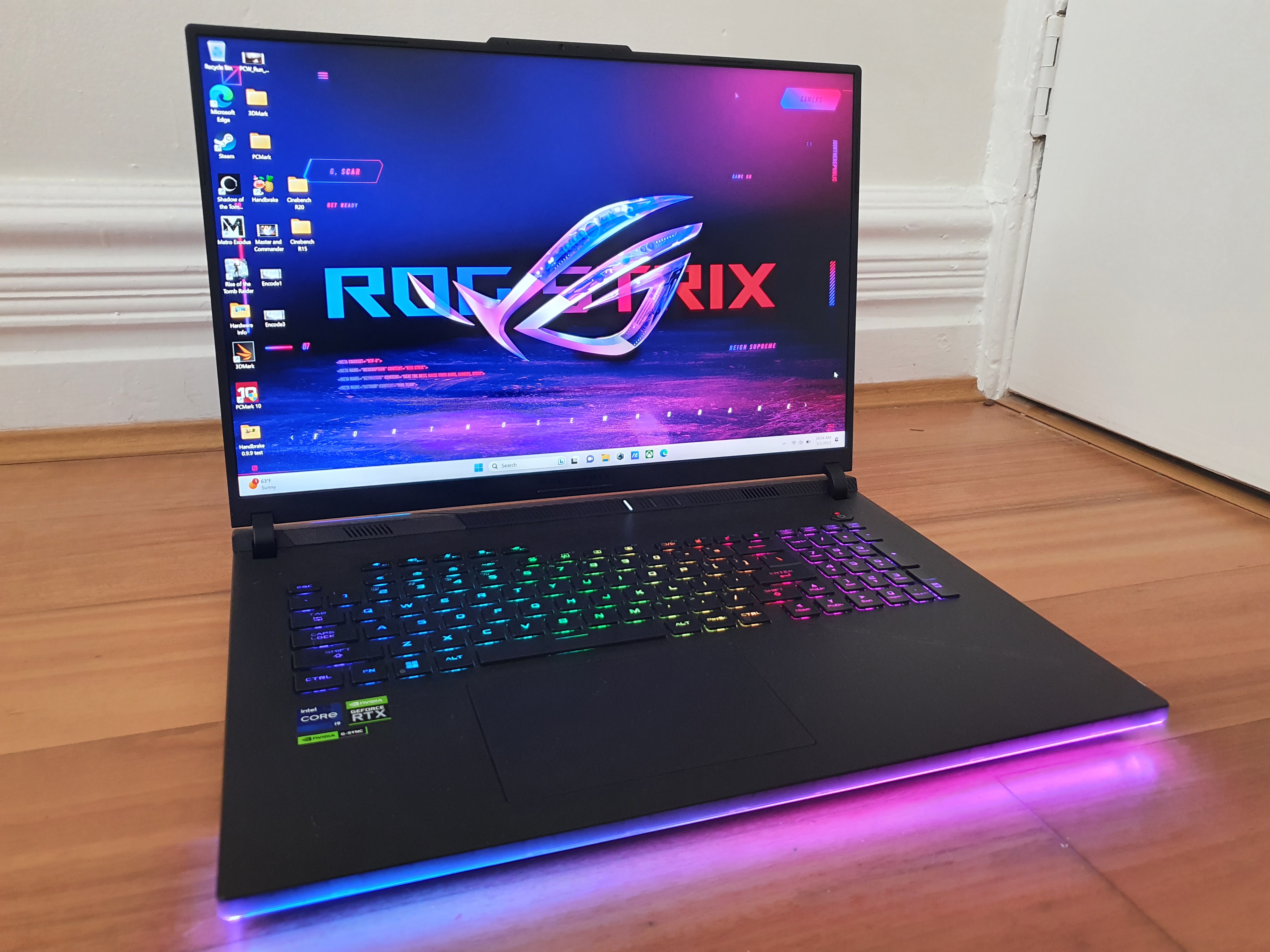
Pros
- The CPU and GPU produce impressive power
- The 18-inch QHD+ display is large and brilliantly colorful
- Aura Sync RGB light bars lighten things up
Cons
- Battery life is just average
- The trackpad is too firm for all-day use
- A 1080p webcam would have made it more suitable for creators
Want a giant 18-inch screen on your laptop? How about if that giant screen is a QHD+ display with a refresh rate of 240Hz? Well, you already had us at 18-inch screen. The Asus ROG Strix 18 is about as close to a true desktop replacement as you can get. This laptop is absolutely loaded with great performance features that include a Core i9-13980HX processor, an RTX 4090 GPU, 32GB of RAM, and a 1TB SSD. But that’s not even the best part—the ROG Strix 18 comes with a mouth-watering 18-inch QHD+ (2560×1600) ROG Nebula panel with 100% DCI-P3 and sRGB coverage and an outstanding 240Hz refresh rate.
At first glance, the price of the Asus ROG Strix 18 might turn some people away, but it can be found for a lot cheaper than some competitors’ models such as Razer and MSI with the same configuration. The size can either be an upside or downside depending on what you’re looking for from a laptop, but if you want a desktop replacement complete with an outstanding display then there are currently none better than the Asus ROG Strix 18.
Dell XPS 17 9730 – Best content creation laptop

Pros
- Expansive 17-inch 16:10 display
- Thin chassis
- Incredible battery life
Cons
- High price without OLED display
- Low-wattage GPU limits 3D performance
- Low-res 720p webcam
Dell’s updated XPS 17 boasts a huge 17-inch screen, 13th-gen Intel Core i7-13700H CPU, and a GeForce RTX 4070 GPU. Not only is that enough performance to breeze through all of your content projects, but it also brings a 1TB SSD giving you plenty of storage for all of them as well. By packing its 4K, touch screen panel into such a compact laptop, and loading the notebook itself with every feature professionals ask for (hello, SD card reader and abundant Thunderbolt 4 ports), the XPS 17 is the poster child for what a content creation workhorse laptop should be.
The one real downside is that the XPS 17 weighs just under five and a half pounds, so it’s a real beast. The webcam is only 720p, as well, which may be a downside if you have to do any online classes or video-conferencing. Buy if you can live with those minor shortcomings, the latest XPS 17 is a phenomenal choice for all content creators.
Samsung Galaxy Book3 Pro 360 – Best laptop for students

Pros
- Stunning OLED upgrade in resolution, performance, more
- One of the first 13th-gen Core laptops
- Top-notch battery life
- Solid inking
- 1080p webcam and very good audio
Cons
- Good, not great, performance
- Webcam effects are iffy
The Samsung Galaxy Book3 Pro 360 checks off a lot of boxes when it comes to laptops for students. It’s powerful and long lasting, and it has great audio and video capabilities. Our review unit lasted a little over 13 hours on a single charge, which is great if you’re jumping from class to class. This configuration includes an Intel Core i7-1360P CPU, Intel Iris Xe graphics, 16GB of RAM, and 512GB of SSD storage. In other words, it has enough juice for things like writing papers, conducting research, checking e-mail, and so on. The 16-inch AMOLED display has a resolution of 2880×1800 and a maximum brightness of 400 nits. The picture is lovely, but you’re going to want to only use this laptop in a well-lit room, as the screen is quite glossy and reflective. It also comes with a 1080p webcam, which will come in handy if you’re taking online classes.
Framework Laptop 13 – Best laptop for tinkerers

Pros
- Great matte display
- Solid-feeling design
- Repairable and upgradeable with ease
- Powerful Intel chips across the line
- Nice keyboard
- Electrical disconnects for mics and camera
Cons
- Weak battery life
- Expansion Modules drive price up for some ports
- Loud fan kicks on under moderate load
If you’re someone who likes to tinker with your computers to continually upgrade them, repair broken parts, or add the latest performance components, then the Framework Laptop 13 is a dream come true. Framework doesn’t just make reparability possible, it makes it a mainstream feature that anyone can do as long as they have a screwdriver—which is included with the laptop. It even comes with swappable, modular ports that can be changed as needed. You can also buy mainboards with new processors installed, achieving the holy grail of a truly upgradeable laptop.
Plus, beyond just its tinkering capabilities the Framework laptop is just a great all-around laptop straight out of the box. It comes stocked with the latest 13th-gen Core i7-1360P processor, Intel Iris Xe integrated graphics, 16GB of RAM, an a respectable 512GB SSD. It also has a surprisingly good 3:2 IPS panel with a resolution of 2256 x 1504p that comes with a glare-cutting matte screen. Overall, it’s a laptop that not only delivers right away but actually promotes upgradability and reparability which should serve you for years and years to come.
Asus ROG Flow Z13 (2023) – Best gaming tablet
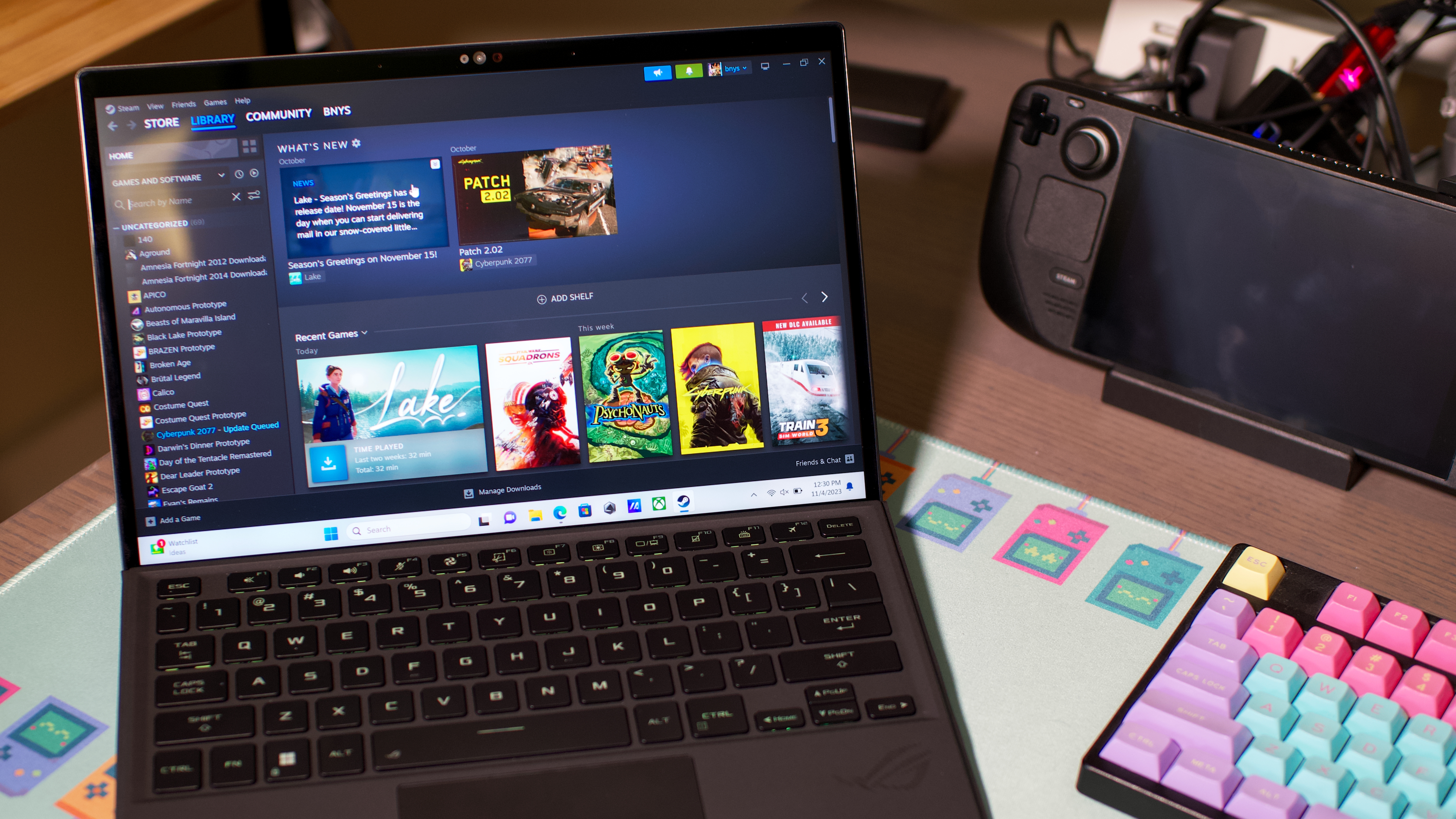
Pros
- Powerful specs
- Great display
- Compact footprint
- Easily upgradeable SSD
Cons
- Short battery life
- Wimpy speakers
- Thin bezels make tablet use infuriating
- 2-in-1 design not for everyone
The Asus ROG Flow Z13 (2023) is a bit of an odd duck, but that’s not necessarily a bad thing. It’s a gaming-focused tablet with a detachable keyboard, which means it’s pretty lightweight. The Flow Z13 weighs 2.6 pounds without the AC adapter and 3.7 pounds with it. That’s unusual for a gaming machine, as most of them tip the scales at around six pounds or more. The hardware is impressive, too. Underneath the hood, you’ll find an Intel Core i7-13900H CPU, an Nvidia GeForce RTX 4060 GPU, 16GB of RAM, and 1TB of SSD storage. When we played the visually demanding Cyberpunk 2077, the Flow churned out 50 fps with “good visual fidelity.” That’s impressive for a gaming laptop this size.
If you’re looking for a powerful gaming machine with a removeable keyboard and a lightweight form factor, then the Asus ROG Flow Z13 is the one to pick.
How we tested
The PCWorld team puts each and every Windows laptop through a series of benchmarks that test GPU and CPU performance, battery life, and so on. The idea is to push the laptop to its limits and then compare it against others we’ve tested. Chromebooks, on the other hand, go through a series of web-based tests. It wouldn’t be fair or possible to run the same kinds of tests on a Chromebook, as they’re Chrome OS-based machines. Below, you’ll find a breakdown of each test and the reasons why we run them.
Windows laptops
- PCMark 10: PCMark 10 is how we determine how well the laptop handles lighter tasks like web browsing, word processing, spreadsheets, and so on.
- HandBrake: HandBrake is more intensive than PCMark 10. It basically measures how long a laptop’s CPU takes to encode a beefy 30GB file.
- Cinebench: Cinebench is a brief stress test of the CPU cores. It does this by rendering a 2D scene over a short period of time.
- 3DMark: 3DMark checks if 3D performance remains consistent over time by running graphic-intensive clips.
- Video rundown test: To gauge battery life, we loop a 4K video using Windows 10’s Movies & TV app until the laptop dies.
Chromebooks
- CrXPRT 2: The CrXPRT 2 benchmark tests a Chromebook’s battery life.
- Speedometer 2.0: This test determines a Chromebook’s web browser performance. It simulates this by adding, completing, and removing a to-do list.
- Basemark Web 3.0: This benchmark gauges how well a Chromebook can handle web-based applications.
- Kraken 1.1: Kraken 1.1 is a JavaScript performance benchmark.
- Jetstream 2: Jetstream 2 is a combination of WebAssembly and JavaScript benchmarks. This is a way to gauge how well a Chromebook runs advanced workloads.
FAQ
What form factor is best for a laptop?
The first question you should ask yourself is what kind of laptop you’re looking for. There’s traditional clamshells, 2-in-1’s, Chromebooks, and much more. The displays on convertible laptops (aka 2-in-1’s), for example, can swing around 360 degrees. This allows you to use the laptop like a tablet. They can also be propped up like a tent for viewing movies or participating in video calls. Chromebooks, on the other hand, exclusively run Google’s web-focused Chrome OS and are generally used for everyday tasks. All you need is a Gmail account and boom, you’re in. There are pros and cons to each of them. Chromebooks are affordable and generally have good battery life whereas convertibles are normally lightweight and portable.
How much processing power will I need in a laptop?
If it’s CPU power you’re looking for, look for processors with higher numerical names. A Core i7 is more suited to gaming and more intense work than everyday tasks. Intel processors are available in Core i3, Core i5, Core i7, and Core i9. The higher the number, the more powerful the CPU. If you don’t need a ton of power, Intel Core i5 processors are your best bet, as they offer good performance at a decent price. Basic office and web work gets along just fine on a Core i3. As for AMD options, the Ryzen 3 is good for basic productivity and web browsing, while Ryzen 5 chips rival Intel’s Core i5 as solid all-arounders. If you need more power, the Ryzen 7 chip is well suited for content creation like video editing. Finally, if you’re dealing with 4K video, spring for a Ryzen 9.
Discrete graphics vs. integrated graphics?
You’ll want a discrete graphics card for hardcore gaming or editing videos. It’s separate from the processor, so you can expect higher performance out of it. Integrated graphics, on the other hand, are attached to the CPU and uses less power as a result. This is perfectly fine for everyday tasks, especially if you’re not doing anything that’s graphics-intensive.
What much memory will I need in a laptop?
8GB of RAM is zippy enough for general use. If you’ve got a gaming laptop, 16GB of RAM is the way to go, and content creators will want even more.
Do I need a big display on a laptop?
If you’re a video editor or someone who does a lot of multimedia work, you’ll want a display that’s anywhere from 15- to 17-inches. The sweet spot is really anywhere from 13- to 14-inches, though. The bigger the display, the heavier your laptop is going to be. A 13- or 14-inch display is the best in terms of portability and value.
How long should my laptop last on a single charge?
If you plan on taking your laptop anywhere with you, aim for something that can last 10 to 12 hours on a single charge. That’s more than a full work day, so it should theoretically get you through long flights or a day of classes. Obviously, more is always better. Just know that the bigger the battery, the heavier the laptop. Read our round-up of the best laptop chargers.
How much should I spend on a laptop?
The price really depends on your budget. If you’re strapped for cash (been there, trust me), go for a Chromebook or an entry-level business laptop. These laptops are good choices for students or young professionals. If you can afford to spend more, the versatility of a 2-in-1 laptop is really worth it.
Are connectivity options important on a laptop?
A wide array of ports is always a plus in my book, as it eliminates the need for an adapter. I’d recommend a laptop that has both USB-C and USB-A. An HDMI port is good, too. This is especially useful for when you want to hook up to an external monitor.
